You may be aware of some animals that have more than two eyes. Although some are more well-known, others may surprise you! We’ve found a myriad of animals with more than two eyes.
One creature on this last has 1,000 eyes! Yes, you read that right! Let’s talk about why animals would need more than two and the different types of eyes that can have.
Animals with More Than 2 Eyes
1. Komodo Dragon

Komodo dragons can eat large animals in one gulp.
©USO/ via Getty Images
Did you know that the Komodo dragon is the biggest lizard alive? They can grow nearly 10 feet long and can reach 150 pounds! Looking at a Komodo dragon, you can see two distinct eyes like you would on most creatures.
The parietal eye is the third eye that these lizards have in addition to the two regular eyes. The Komodo dragon uses this eye, which is located on the head, to perceive its surroundings. These lizards use their parietal eye, which cannot be seen, to study the changing seasons and shifts in both daylight and darkness.
2. Iguana
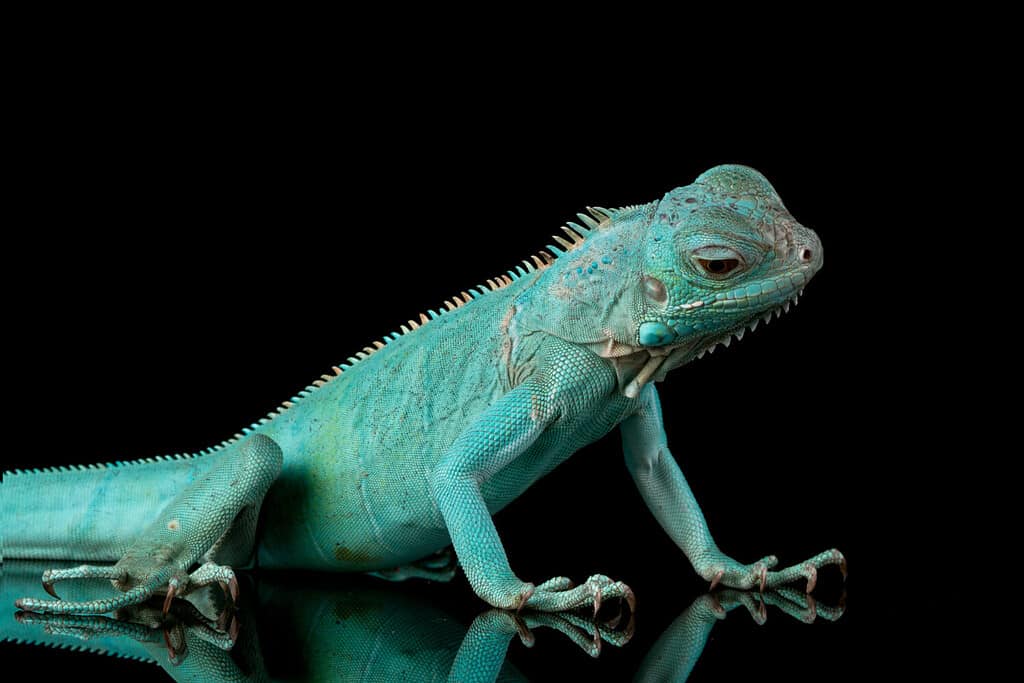
There are 35 species of iguana.
©Kurit afshen/Shutterstock.com
Like the Komodo dragon and numerous other reptiles, the iguana possesses a parietal eye. This eye is less noticeable than normal eyes and is able to be identified upon careful inspection.
The third eye of the iguana is oriented upward and detects light as well. This aids in its ability to recognize when a predator is approaching from overhead.
3. Tuatara

A tuatara named Henry (not pictured) is over 150 years old.
©Roberto Dani/Shutterstock.com
Yet another animal with more than two eyes is the tuatara. Although a reptile, the tuatara isn’t categorized as a lizard. The endemic tuatara lives in the coastal seas of New Zealand. Although it is a distinct reptile from lizards and snakes, this critter is related to both.
The parietal eye on the tuatara is similar to that of an iguana. It’s on the top of their head and can be used to scope out predators. The third eye of the tuatara is much more like an ordinary one with the lens, retina, and other components than the third eye of other reptiles.
However, because it is encased with scales, it cannot operate like a typical eye.
4. Lamprey

Lampreys are invasive to the Great Lakes.
©Gena Melendrez/Shutterstock.com
If you’ve never seen a lamprey before, they’re quite creepy-looking creatures. Although they aren’t actually eels, they are occasionally referred to as lamprey eels. 38 species are still alive today, and five have already gone extinct. This animal lives in freshwater and coastal environments.
It is distinguished by a funnel-shaped mouth that is lined with teeth. These slippery serpent-looking animals have four eyes. Although they aren’t very noticeable, these nevertheless exist. Two parietal eyes remain at the very top of the skull after the initial two common eyes.
The parapineal and pineal organs give rise to these eyes, which safeguard the lamprey.
5. Triops
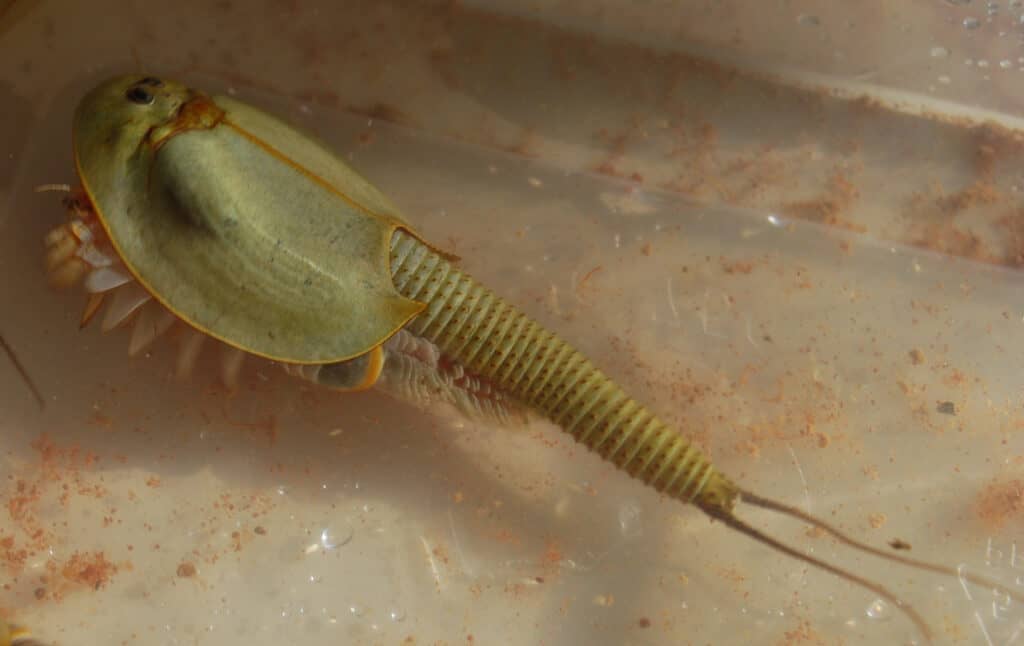
A common
Triopsis the dinosaur shrimp.
©Louise Barnes/Shutterstock.com
With a name like Triops, can you guess how many eyes this animal has? If you said three, you’ve earned yourself a gold star! Its name is derived from the Greek word for “three eyes.” Crustaceans make up every species of the Triops genus.
You can find them all throughout the world, some are household pets, and others are kept in decorative pools. Similar to the aforementioned reptiles, Triops have three eyes. The third is facing up and situated between the two eyes.
Unlike the other two, this third eye is largely concealed and is capable of detecting light.
6. Four-Eyed Fish
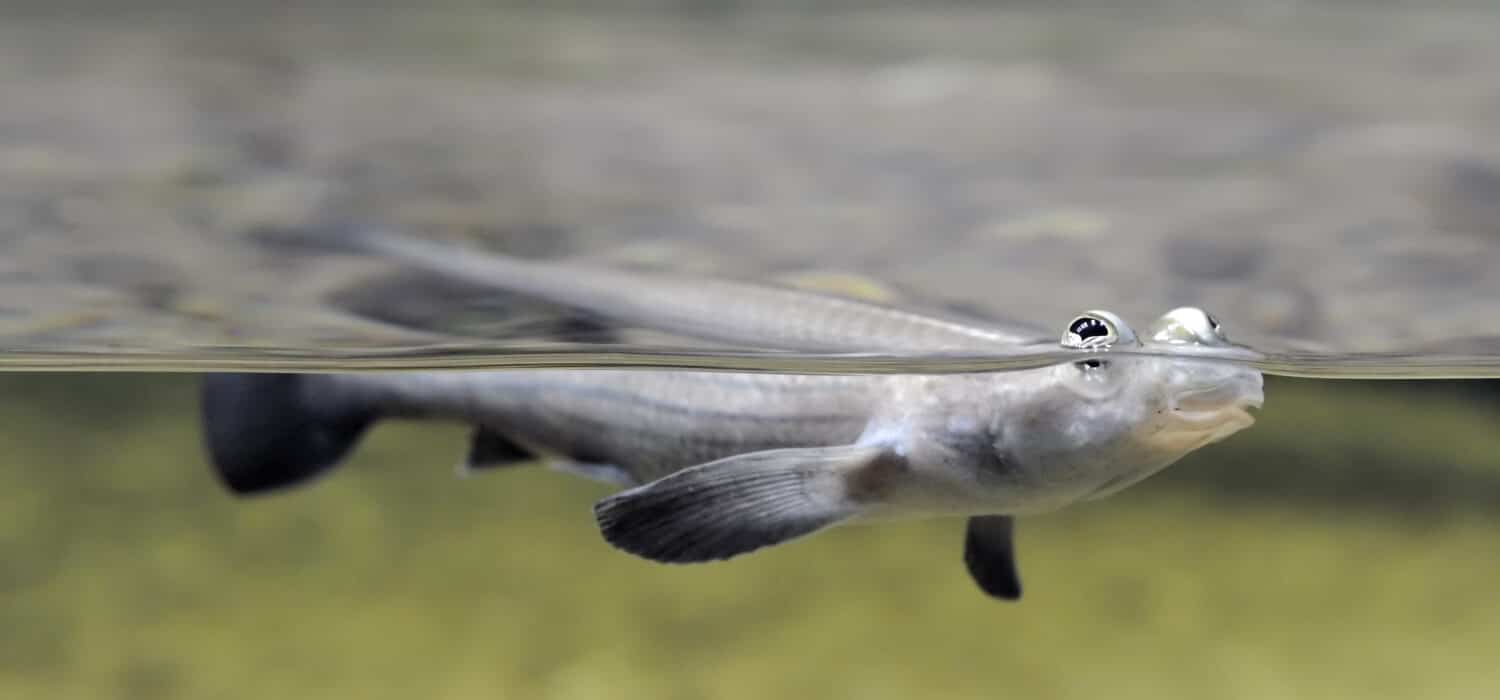
Four-eyed fish can see above and below the water at the same time.
©gallimaufry/Shutterstock.com
The genus Anableps, which belongs to the Anablepidae family, is more well-known as the “four-eyed fish.” Even the moniker of the fish alludes to how many eyes it possesses! The precise number of eyeballs is up for discussion.
The design of the eyeballs is to blame for this. The fish has only two discernible eyes, each of which has lobes. It has four separate visions thanks to the lobes’ pupils, which may move in various directions.
Regardless of whether we consider the lobes to be independent eyes or not, the four-eyed fish is impressive. It’s known to survive in extremely shallow water and their eyes help them stay safe in this type of environment.
7. Bees

Wasps and flies also have five eyes.
©miroslavmisiura/iStock via Getty Images
Because they help with pollination, bees are very well-liked. Because these fuzzy fliers are quite small, it can be hard to see all five of their eyes! These eyes are positioned in a triangle-like pattern.
Three ocelli sense light, while two bigger eyes display graphics. The latter aids in predator avoidance for bees.
8. Praying Mantis
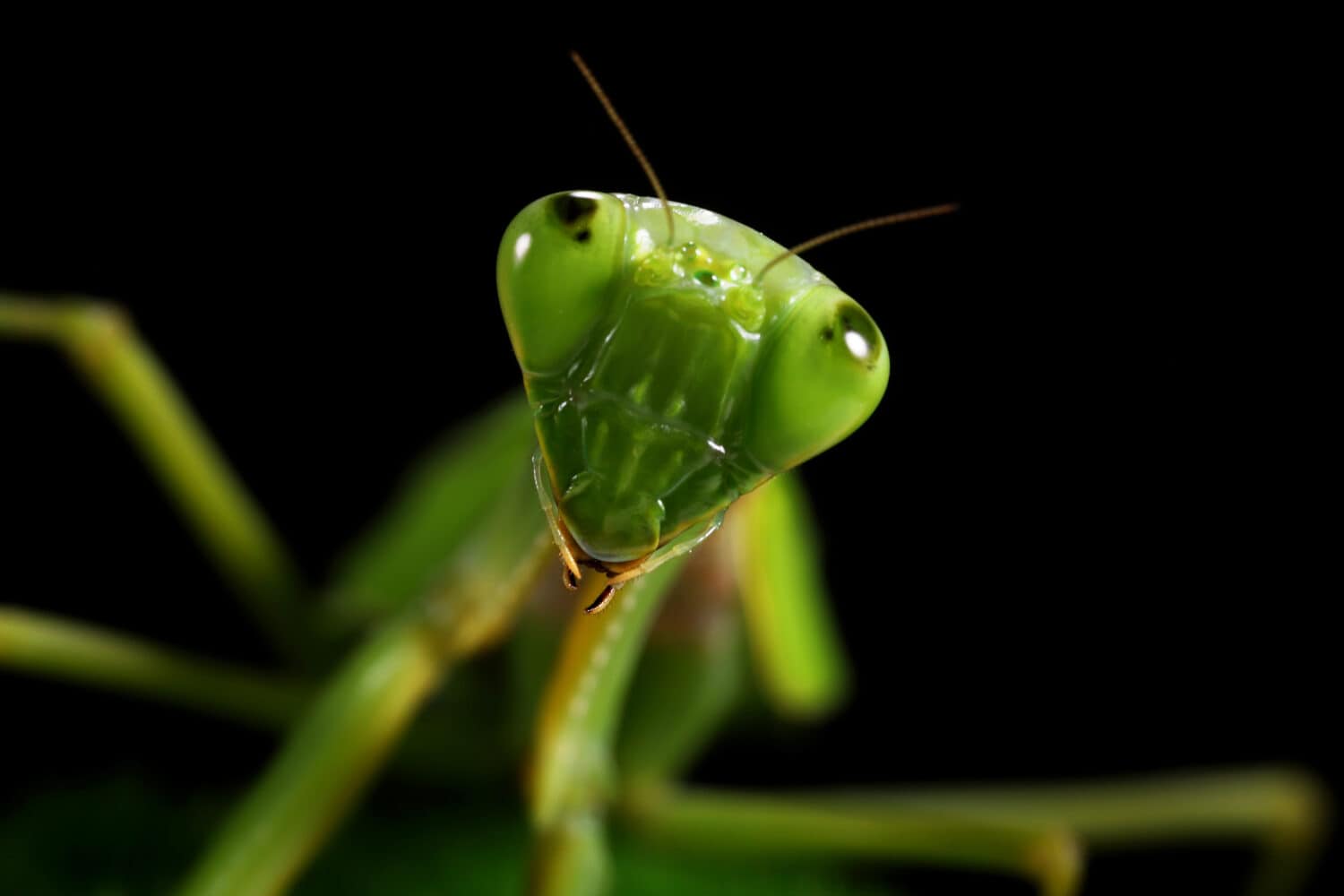
Some legends say that when a praying mantis looks at you, you’ll soon get sick.
©Lauren Suryanata/Shutterstock.com
There’s a lot to take in when looking at a praying mantis. They’re quite unique creatures and can easily captivate anyone! Although some people keep them as pets, in nature, you will find praying mantises in temperate and tropical environments.
These creatures got their name due to the folding arms that look like a religious figure praying. Like most animals, this one has two compound eyes. There are three more smaller eyes surrounding them that can detect light. In total, praying mantises have five eyes!
9. Starfish

Starfish
don’t have a brain!
©vojce/ via Getty Images
There are about 1,900 species of starfish, and they may be found in all oceans, no matter the water temperature. In fact, starfish can live as far as 20,000 feet below the surface.
The eyespots on the upper part of every limb of a starfish give it a total of five eyes. It can locate food and evade predators in its habitat because of these eyespots. Each of the five eyes can detect shifts in lighting patterns as well.
10. Opabinia

‘s flexible trunk had a hand-like grabber.
©dottedhippo/iStock via Getty Images
Despite being extinct, the Opabinia still qualifies for this list because of how many eyes it had. The Opabinia was an arthropod that lived for over 500 million years. In 1911, Charles Doolittle Walcott made the discovery.
According to evidence from fossils, Opabinia had five eyes. These unique-looking creatures had all compound eyes. They were pretty obvious, as they jutted out from their faces. Opabinia also had a strange tail and a delicate body.
11. Jumping Spider
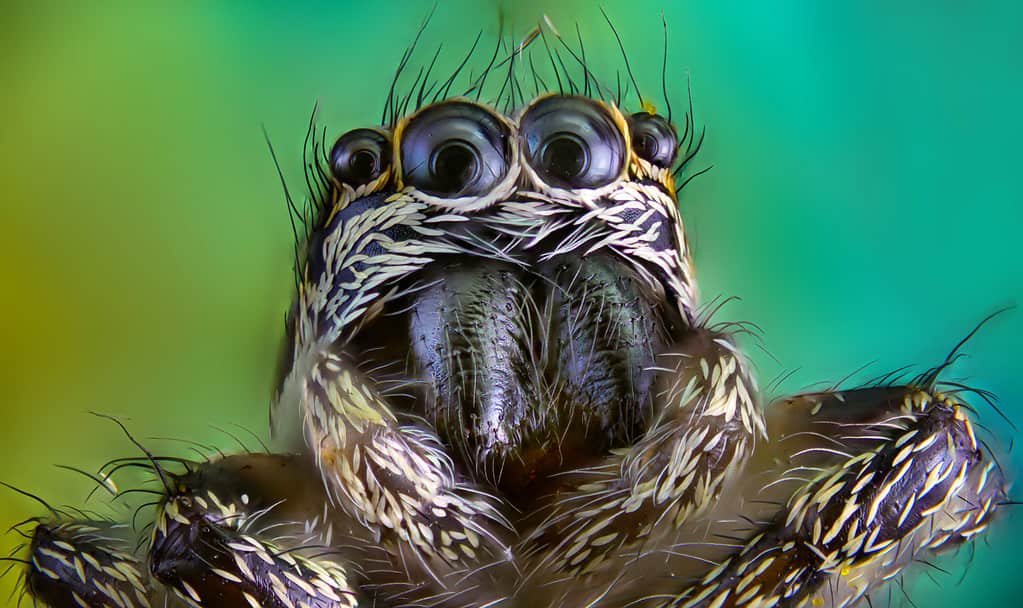
Jumping spiders are venomous.
©Andrei Savitsky / CC BY-SA 4.0 – License
Spiders are one of the most obvious animals with more than two eyes. Arachnids frequently have eight eyes, and jumping spiders are no exception. The two main eyes function and move like ordinary visual organs.
The remaining six are motionless. These eyes work as a team to provide the jumping spider with superb vision.
12. Ogre-faced Spider
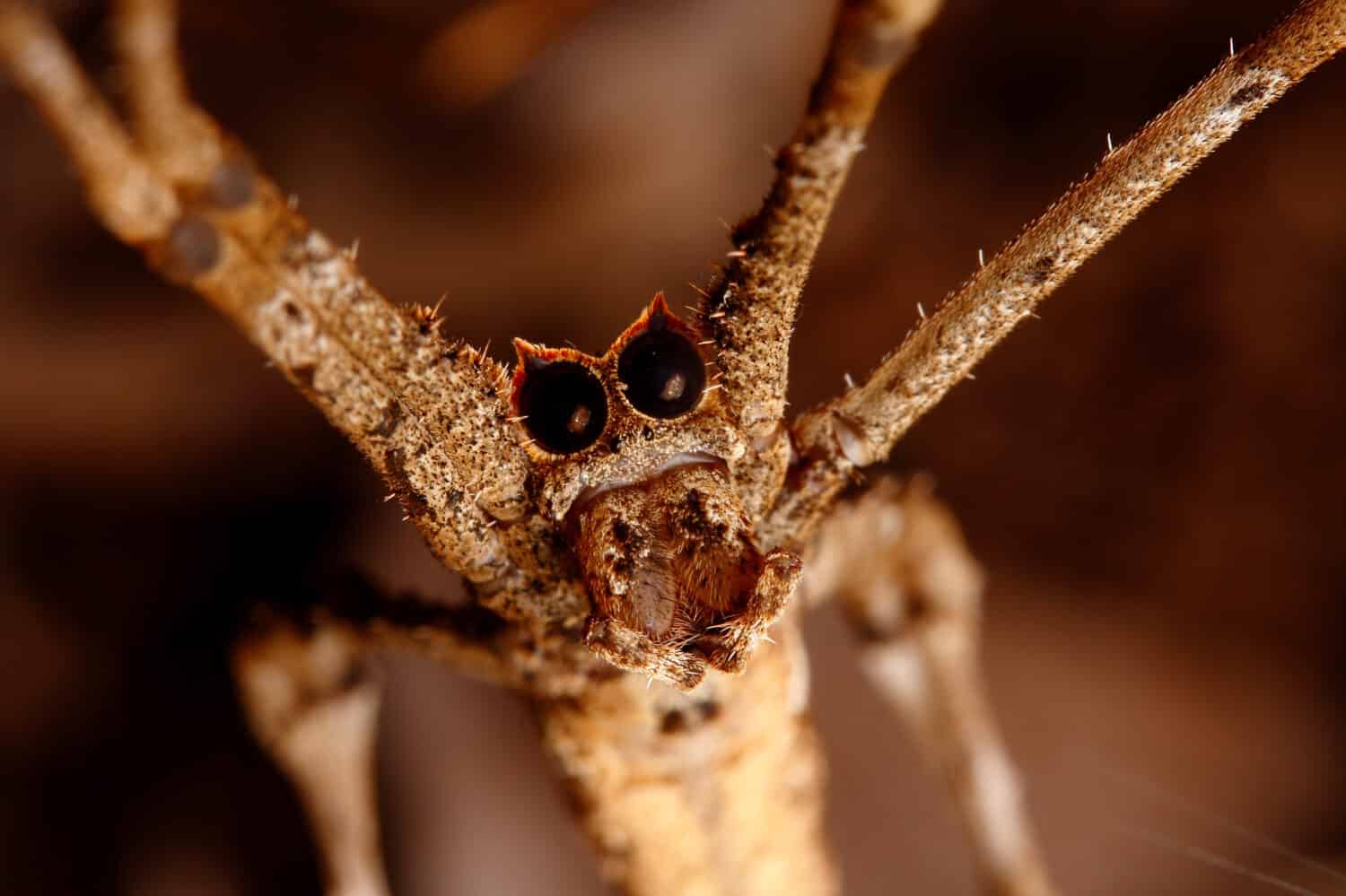
Despite its name, this spider looks nothing like the famous ogre Shrek.
©Ondrej Michalek/Shutterstock.com
Next, we have a creature that is politely named the “ogre-faced spider.” It is well known that these spiders weave webs that carry them to their targeted victim. The ogre-faced spider initially appears to be a two-eyed arachnid.
Something unique about this animal’s eyes is that there are six more that are hidden in plain sight! All eight of their eyes allow ogre-faced spiders to see exceptionally well in the dark.
13. Horseshoe Crab
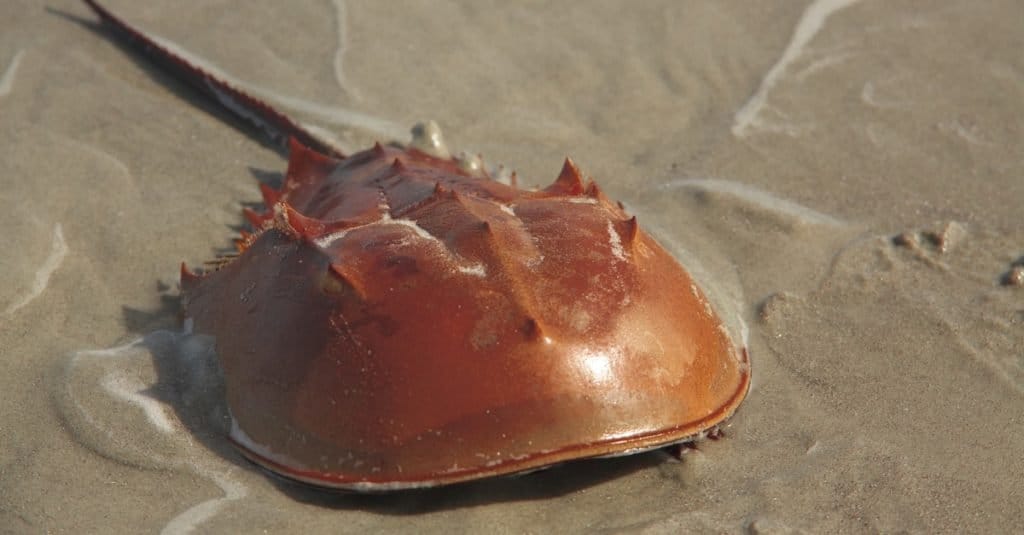
Horseshoe crabs are older than dinosaurs!
©SandraG/Shutterstock.com
The horseshoe crab’s name is deceptive. It is not a crustacean or a crab. This animal is a chelicerate, which surprisingly, is closely related to spiders and scorpions. The 10 eyes that horseshoe crabs have are not particularly apparent to the untrained eye.
They can detect light, hunt food, and evade predators thanks to their eyes.
14. Scorpion
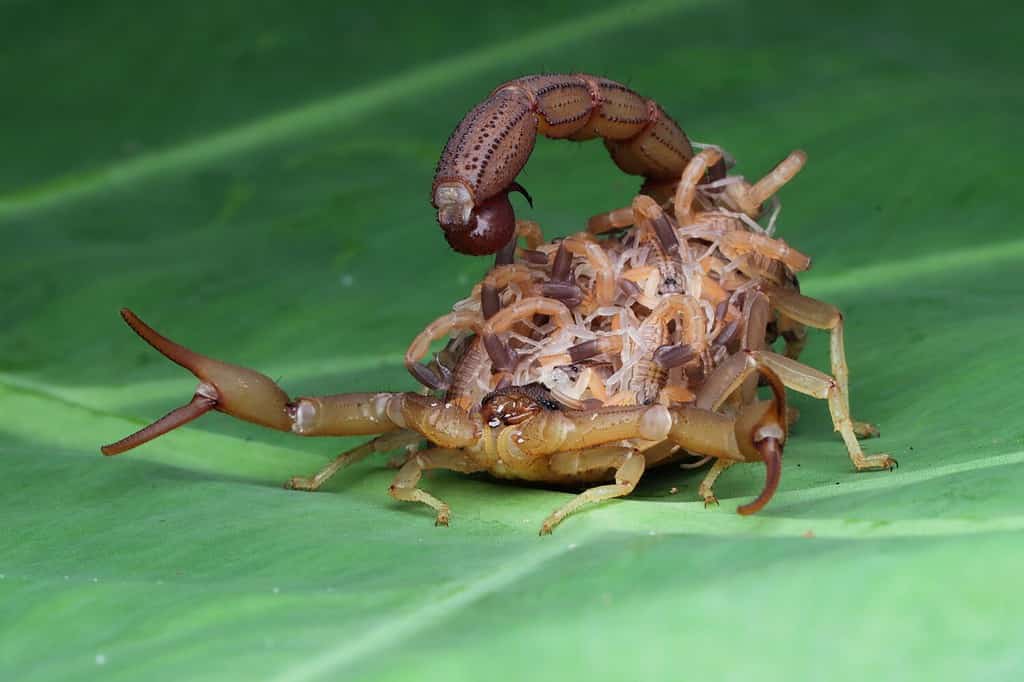
Scorpions are cousins to spiders.
©Kurit afshen/Shutterstock.com
Speaking of scorpions, they too have more than two eyes. They are well-known for having pincers that sting with a poisonous substance. The desert is the scorpion’s primary habitat; however, it can be found elsewhere.
A scorpion has 12 eyes. For seeing, the first two eyes are located on top of the head, while the other 10 are located on the body. It recognizes motion and distinctions between dark and light using the lateral eyes.
15. Chiton
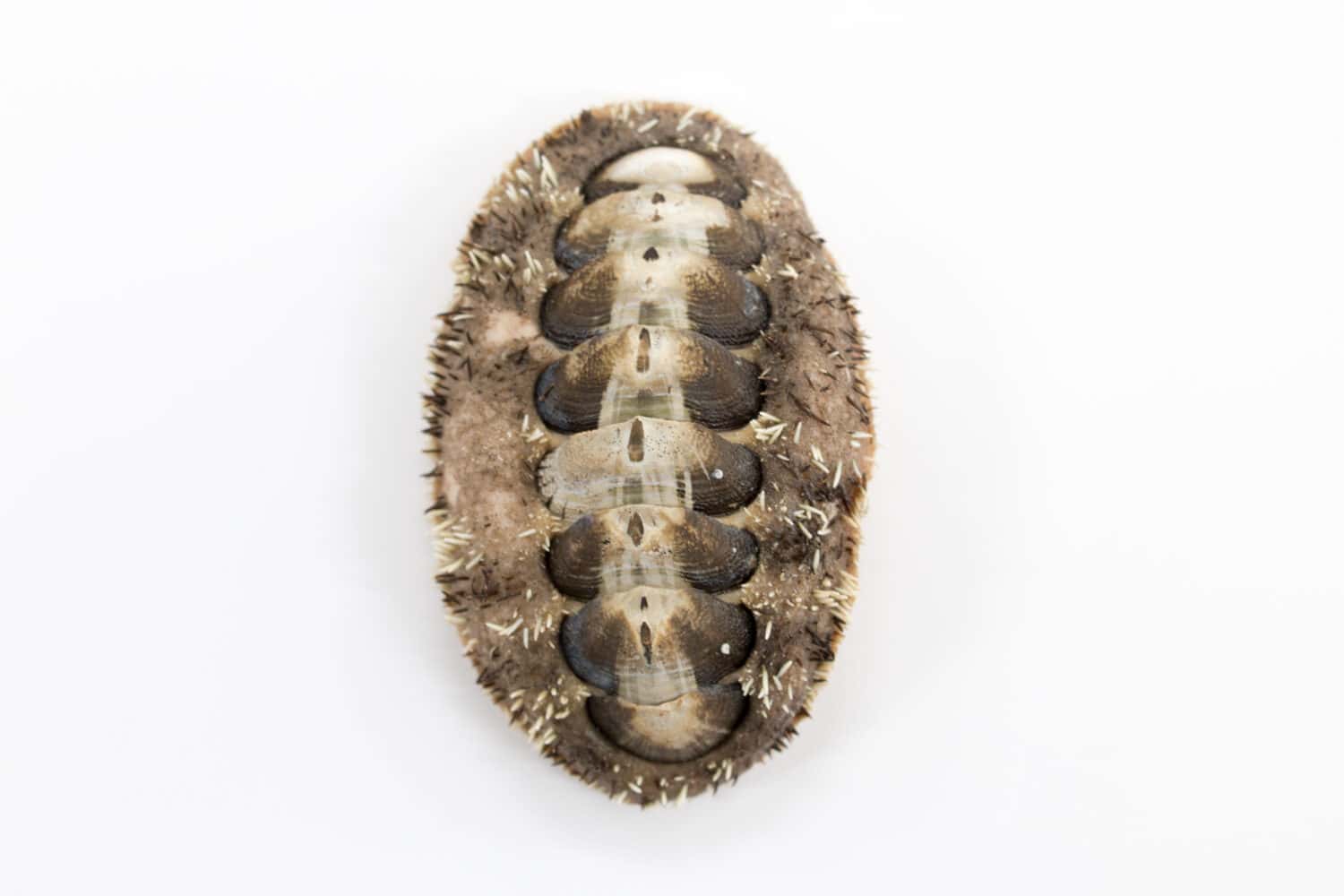
Polyplacophora loves hiding in underground caves.
©Rattiya Thongdumhyu/Shutterstock.com
A mollusk belonging to the Polyplacophora class called a chiton takes the cake for having a lot of eyes. In fact, the chiton’s most outstanding feature is how many eyes it has. Chiltons can have up to 1,000 eyes! They have small, ocelli-based eyes that are embedded in their shell.
Their glowing eyeballs, which they may use to replace broken ones, allow them to see in the dark.
16. Box Jellyfish

The box
jellyfish
is the world’s most dangerous jellyfish!
©Danza/Shutterstock.com
Jellyfish can be visually stunning creatures. Although you may not be able to tell, box jellyfish have 24 eyes! Only one pair of their eyes have the capacity to create images and are comparable to human eyes.
These eyes enable the box jellyfish to accomplish difficult activities such as travel, avoiding barriers, quick directional movement, and reacting to light.
Summary of Animals with More Than 2 Eyes
| Animal | Number of Eyes |
|---|---|
| Komodo Dragon | 3 |
| Iguana | 3 |
| Tuatara | 3 |
| Lamprey | 4 |
| Triops | 3 |
| Four-eyed Fish | 4 |
| Bees | 5 |
| Praying Mantis | 5 |
| Starfish | 5 |
| Opabinia | 5 |
| Jumping Spider | 8 |
| Ogre-faced Spider | 8 |
| Horseshoe Crab | 10 |
| Scorpion | 12 |
| Chiton | 1,000 |
| Box Jellyfish | 24 |
The photo featured at the top of this post is © Kesorn Weaver/iStock via Getty Images
Thank you for reading! Have some feedback for us? Contact the AZ Animals editorial team.






